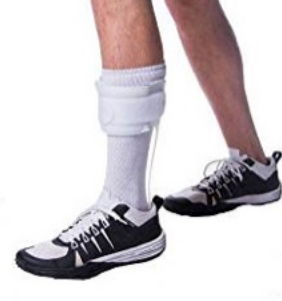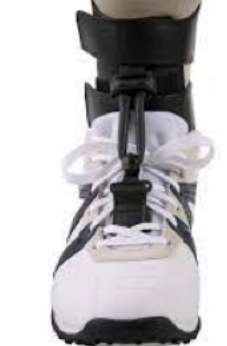
Sometimes in the presence of conditions such as stroke, spinal cord injuries, cerebral palsy, multiple sclerosis, peripheral neuropathy and arthritis and fractures in the ankle and foot, the natural rolling movement from heel to toe is affected making walking difficult, unsafe and requiring more effort with compensatory movements from the legs and body.
The ankle and foot play an important role in walking with the heel striking the floor initially as we step down, rolling onto the whole foot then rolling on to the toes to propel us forward. This motion of the ankle and foot works together with the rest of the legs and body to allow for a symmetrical and efficient walking pattern.
An Ankle-Foot Orthosis (AFO) is the most commonly used orthoses or brace applied to the ankle and foot to provide support, positioning and control in these conditions.
Aim:
- Stabilise the foot and ankle to promote foot clearance when walking to reduce the risk of falling and compensatory movements.
Indications:
- Control ankle position
- Compensate for muscles weakness
- Immobilise the ankle and lower leg
- Stabilise the ankle and foot
- Promote normal movement and gait patterns
- Promote walking efficiency
Types of AFO:
Braces are usually lightweight made from light metal, plastic, leather and synthetic fabrics mainly to allow for normal movement as much as possible. Broadly, AFOs are categorised into 2 types: Static and Dynamic.
Static AFO:
A static AFO can be flexible or rigid ‘L’ shaped brace that extends from the calf to the bottom of the foot. The AFO maintains the ankle so the foot is not dropping downwards.
Dynamic AFO:
A dynamic AFO promotes a more symmetrical and efficient pattern of walking. it has an elastic component that lifts the toes and limits foot drop.
This blog provides general information for AFO’s. For individualised assessments and fittings please book in with our physiotherapists in our Westmead, Norwest, Blacktown and Penrith rooms.








